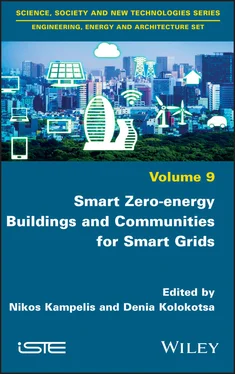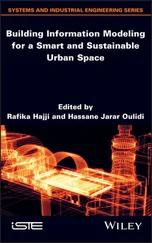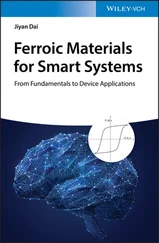In Chapter 5, the energy consumption and indoor environmental quality of one of the three buildings of the Design and Environment School (SDE3) of the National University of Singapore is evaluated and cross-correlated based on a different perspective. Prediction algorithms based on artificial neural network models are tested.
In Chapter 6, objective and subjective evaluation of thermal comfort is analyzed in the context of a unique smart zero-energy industrial facility in Italy.
In Chapter 7, the user engagement of residents in a smart zero-energy building in the same area of Italy is investigated in order to provide the framework for analyzing individual preferences, identifying consumption patterns and assessing the utilisability of information provided to users as well as how effective this is in supporting behavioral change.
Chapter 8deals with the integration of energy storage in smart communities and smart grids. The various energy storage technologies are presented including electrical, mechanical, chemical and thermal. Energy storage and optimization of its utilization in smart grids integrating renewable energy technologies is explored through state-of-the-art case studies.
Finally, the conclusion outlines the main and overall conclusions and recommendations stemming from the findings of the presented research.
The editors express their deepest appreciation and gratitude to all partners, personnel, and researchers for their unique contributions, time and efforts which altogether resulted in making this publication happen. We are also very thankful to the European Commission and the EU taxpayer for devoting the necessary financial resources for the implementation of the Smart GEMS project.
Nikos KAMPELIS
November 2021
| AMI |
Advanced Metering Infrastructure |
| ANN |
Artificial Neural Network |
| AP |
Accredited Professional |
| ATES |
Aquifer Thermal Energy Storage |
| BAS |
Building Automation System |
| BCVTB |
Building Controls Virtual Test Bed |
| BEMS |
Building Energy Management System |
| BIM |
Building Information Modeling |
| biPV |
building-integrated PhotoVoltaics |
| BMS |
Building Management System |
| CAES |
Compressed Air Energy Storage |
| CDD |
Cooling Degree Days |
| CHP |
Cogeneration of Heat and Power |
| COP |
Coefficient Of Performance |
| CPC |
Compound Parabolic Collector |
| CSP |
Curtailment Service Provider |
| Cv |
Coefficient of variance |
| DA |
Day-Ahead |
| DC |
Direct Current |
| DER |
Distributed Energy Resources |
| DG |
Diesel Generator |
| DHW |
Domestic Hot Water |
| DNI |
Direct Normal Irradiance |
| DR |
Demand Response |
| DSG |
Direct Steam Generation |
| DSM |
Demand Side Management |
| EED |
Energy Efficiency Directive |
| EER |
Energy Efficiency Ratio |
| EES |
Electrical Energy Storage |
| EMS |
Energy Management System |
| EPBD |
Energy Performance Buildings Directive |
| ES |
Energy Signature |
| ESEER |
European Seasonal Energy Efficiency Ratio |
| ETL |
Extract, Transform, Load |
| EV |
Electric Vehicles |
| FC |
Fuel Cell |
| FCU |
Fan Coil Units |
| FMU |
Functional Mock-up Units |
| G2V |
Grid-to-Vehicle |
| GA |
Genetic Algorithm |
| GSHP |
Ground Source Heat Pumps |
| HDD |
Heating Degree Days |
| HESS |
Hybrid Energy Storage Systems |
| HMI |
Human Machine Interface |
| HPS |
Hydro-Pumped Systems |
| HRU |
Heat Recovery Units |
| HTF |
Heat Transfer Fluid |
| HVAC |
Heating, Ventilation, Air Conditioning |
| HVDC |
High Voltage Direct Current |
| IAM |
Incident Angle Modifier |
| ICT |
Information and Computer Technology |
| ID |
Integrated Design |
| IED |
Integrated Energy Design |
| IoT |
Internet of Things |
| k-NN |
k-Nearest Neighbor |
| KPI |
Key Performance Indicator |
| LCA |
LifeCycle Analysis |
| LCC |
LifeCycle Cost |
| LCCA |
LifeCycle Cost Assessment |
| LFC |
Linear Fresnel Collectors |
| LFR |
Linear Fresnel Reflector |
| LOLP |
Loss Of Load Probability |
| MAPE |
Mean Average Percentage Error |
| MS |
Member States |
| MS |
Molten Salt |
| MS-TES |
Molten Salt Thermal Energy Storage |
| NARX |
Nonlinear AutoRegressive network with eXogenous input |
| NUS |
National University of Singapore |
| NZEB |
Nearly Zero-Energy Building |
| ORC |
Organic Rankine Cycle |
| PCM |
Phase Change Material |
| PEV |
Plug-in Electric Vehicles |
| PLC |
Programmable Logic Controller |
| PMP |
Performance Measurement Protocols |
| PMV |
Predicted Mean Vote |
| POD |
Point Of Delivery |
| PPD |
Percentage of People Dissatisfied |
| PSO |
Particle Swarm Optimization |
| PTC |
Parabolic Trough Collectors |
| PV |
PhotoVoltaic |
| R |
Pearson's coefficient |
| RES |
Renewable Energy Sources |
| RforI |
Research for Innovation |
| RH |
Relative Humidity |
| RMSE |
Root Mean Squared Error |
| SCTF |
Single Coil Twin Fan |
| SDE |
School of Design and Environment |
| SEER |
Seasonal Energy Efficiency Ratio |
| SHC |
Solar Heating and Cooling |
| SME |
Small and Medium Enterprises |
| SMERC |
SMart grid Energy Research Center |
| SMES |
Superconducting Magnetic Energy Storage |
| SPSS |
Statistical Package for Social Sciences |
| TES |
Thermal Energy Storage |
| V2B |
Vehicle-to-Building |
| V2G |
Vehicle-to-Grid |
| VRFB |
Vanadium Redox Flow Batteries |
| WT |
Wind Turbine |
| ZEB |
Zero-Energy Buildings |
Chapter written by Nikos KAMPELIS.
1
The Role of Smart Grids in the Building Sector
A smart grid is a dynamically interactive real-time infrastructure concept that encompasses the many visions of the stakeholders of diverse energy systems (El-Hawary 2014). Smart grids are electrical power grids that are more efficient and more resilient, and therefore “smarter”, than existing conventional power grids. The smartness is focused not only on the elimination of blackouts, but also on making the grid greener, more efficient, adaptable to customers’ needs, and therefore, less costly (El-Hawary 2014; Giordano et al. 2013). Smart grids incorporate innovative IT technology that allows for two-way communication between the utility and its customers/users. As a result, the sensing along the transmission lines and the sensing from the customer’s side is what makes the grid “smart”.
Читать дальше












